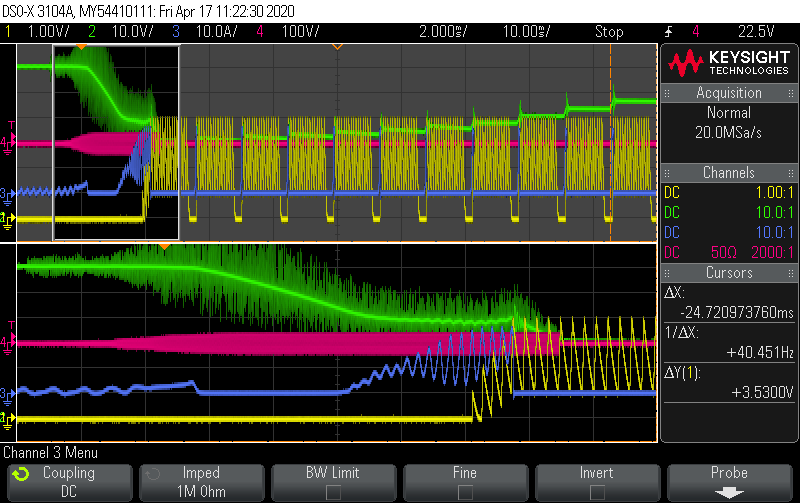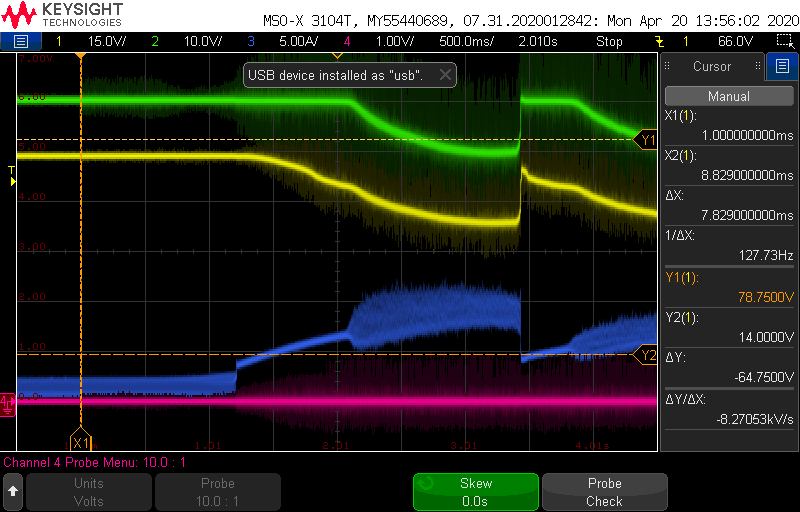Team,
The description in the datasheet indicates to use a gate drive resistor of 10 Ohms if CISS is above 200pF. The MOSFET we have chosen is the FDP036N10A which has a very large CISS (5485pF). For this size of MOSFET, is it necessary to have a lower gate drive resistance?
The second query we have is related to an unexpected shutdown that we are seeing. After the FET is fully enhanced, our system begins to draw power and we observe the gate on the FET start to drop unexpectedly. This is not a hard turn-off as seen in other situations. The gate takes about 1.5msec to drop to a point where current is shut off. Do you have any suggestions for what may be happening here?






